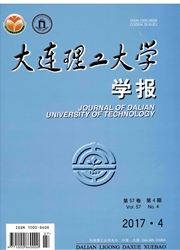

 中文摘要:
中文摘要:
大圆筒结构是一种适宜于软土地基上的新型港口水工建筑物,目前主要研究集中在极限承载力分析,而对这种结构在波浪荷载循环作用下的承我力尚缺乏合理的计算方法.基于软黏土的循环强度概念,在大型通用有限元分析软件ABAQUS平台上,通过二次开发,将Duncan-Chang非线性弹性应力-应变关系与Mises屈服准则结合,针对大圆筒等结构及基础形式,基于拟静力分析建立了循环承载力的计算模型.结合长江口深水航道治理二期工程,对软基上大圆筒结构的循环承载力进行了三维非线性有限元计算,并与极限承载力进行了对比.结果表明,与不考虑软土地基强度弱化情况相比,循环荷载作用下大圆筒结构的承载力显著降低.
 英文摘要:
英文摘要:
The large-diameter cylindrical structures have been increasingly applied to coastal and offshore engineering recently. However, limited studies are made on analyses of the ultimate bearing capacity behaviour of this new type of structures on soft ground. There is a lack for a commonly-acceptable procedure for evaluating cyclic bearing capacity of such structures subjected to wave loading. Based on the concept of cyclic shear strength of soil determined from cyclic tri-axial tests, a quasi-static finite element method for assessing cyclic bearing capacity of offshore foundations or structures is developed. Then the proposed method is numerically implemented in the framework of the general-purpose FEM software ABAQUS. In the method, nonlinear stress-strain relationship proposed by Duncan-Chang and Mises yield criterion are combined together to establish a nonlinear elasto-plastic model of soft clay and the corresponding enhancement is made in ABAQUS. The proposed method is verified by analyzing the bearing capacity of foundations underlying shallow footing. For the large-diameter cylindrical structure employed in the second-phase project of the deep-water channel of the Yangtze estuary, a number of three-dimensional nonlinear FEM analyses for cyclic bearing capacity are conducted and then compared with the ultimate bearing capacity. The numerical results computed by the proposed method indicate that the bearing capacity is reduced considerably due to the cyclic softening effect induced by wave loading with respect to ultimate bearing capacity.
 同期刊论文项目
同期刊论文项目
 同项目期刊论文
同项目期刊论文
 期刊信息
期刊信息
